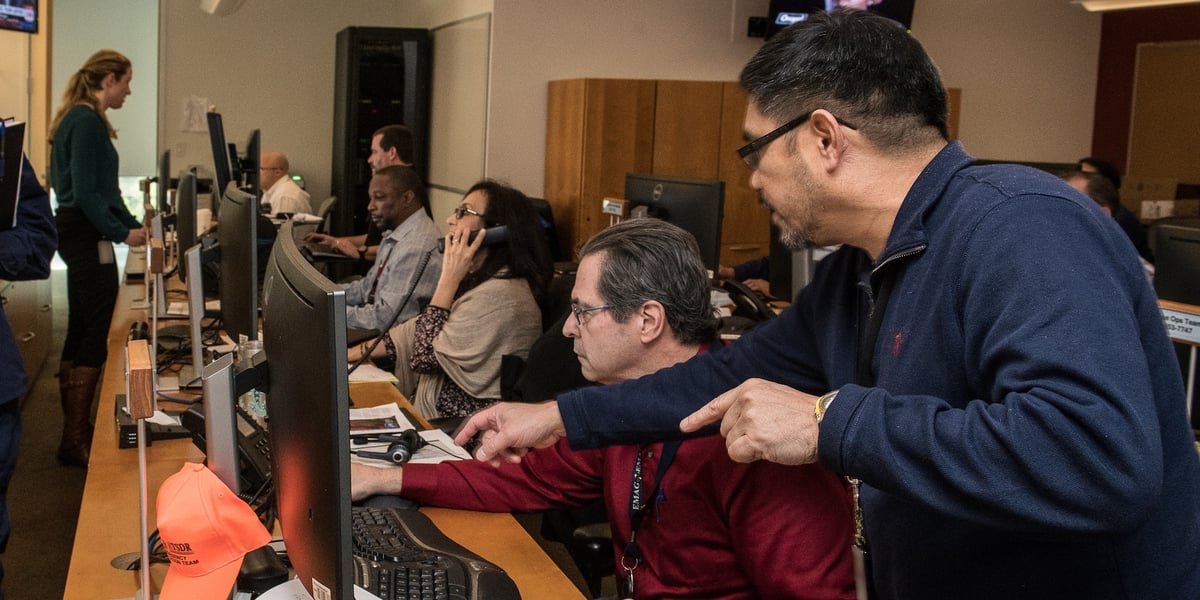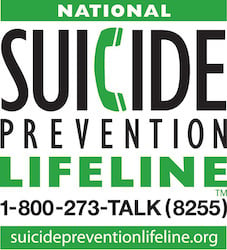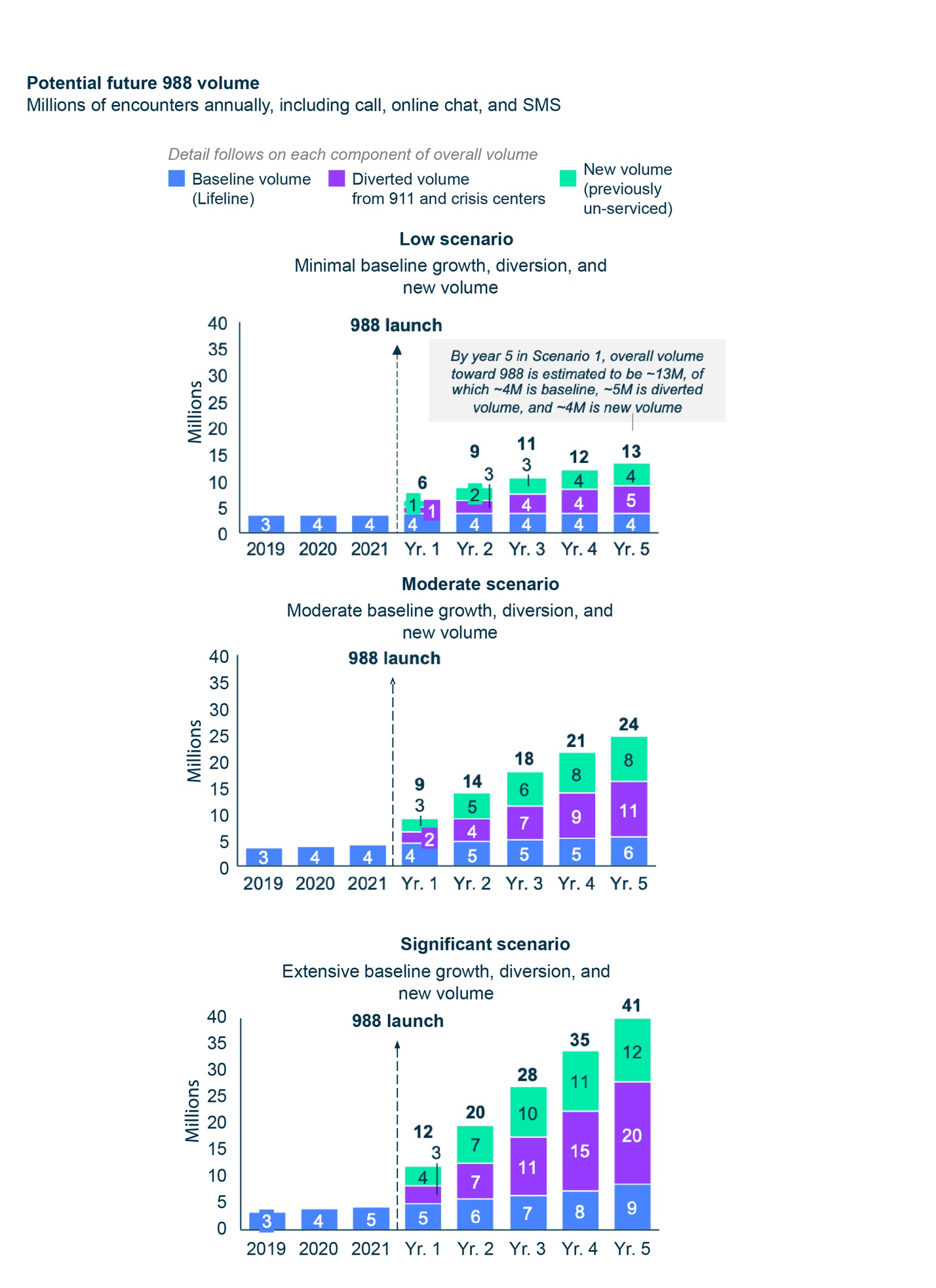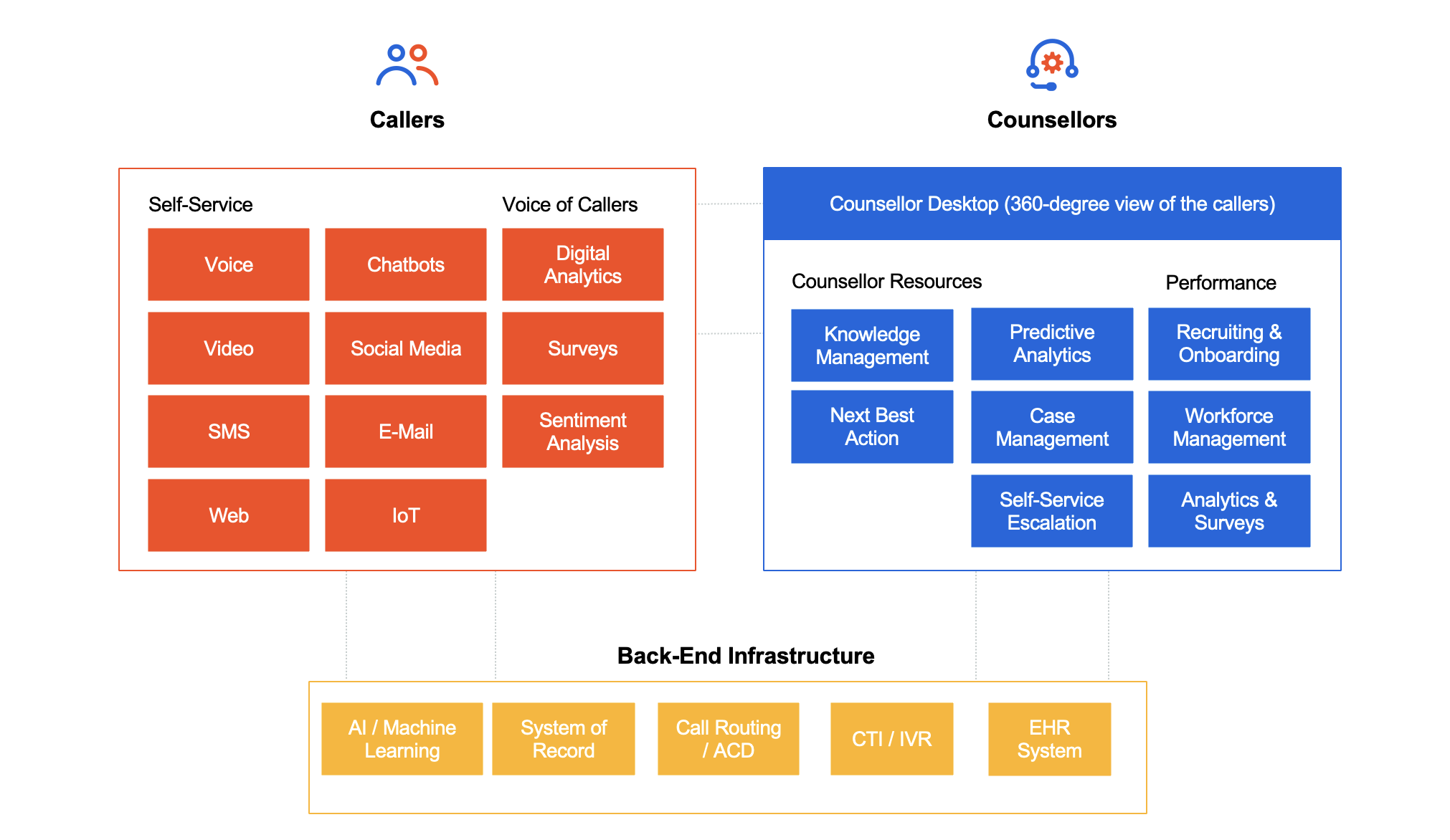Using Automation To Manage Suicide Prevention Hotlines Call Surge With New 988 Service
Using Automation To Manage Suicide Prevention Hotlines Call Surge With New 988 Service

According to the Centers for Disease Control and Prevention (CDC) WISQARS Leading Causes of Death Reports, in 2019, suicide was the tenth leading cause of death overall in the United States (U.S.), claiming the lives of over 47,500 people. In fact, suicide was the second leading cause of death among individuals between the ages of 10 and 34, and the fourth leading cause of death among individuals between the ages of 35 and 44. According to the same CDC report, there were nearly two and a half times as many suicides in the U.S. as there were homicides in 2019.

Currently, National Suicide Prevention Lifeline provides 24x7 services via a toll-free hotline with the number 1-800-273-8255 (TALK) to anyone in the U.S. “in suicidal crisis or emotional distress.”
The Lifeline was founded by the U.S. Substance Abuse and Mental Health Services Administration (SAMHSA) and consists of a network of over 180 crisis centers across the U.S. It provides phone calls, web-based chat, and limited SMS-based services. It also assists the Veterans Crisis Line and the Spanish sub-network.
When a caller calls the Lifeline number, the call is routed to the local crisis center. If the local center is unable to answer, the call is routed to the national backup network. According to Vibrant Emotional Health, a nonprofit organization administering the Lifeline, the annual inbound call volume in 2020 was 3.5 million to Lifeline and 12.1 million to crisis center network.
See how automation helps contact centers manage high-interaction call volumes.
The key challenge faced by the Lifeline service is awareness itself. Most of the people looking for help are not aware of this number. So, callers end up calling 911 for emergencies—including mental health emergencies. Law enforcement officers responding to those 911 calls may not be trained on how to handle mental health and suicide-related situations. Depending upon the city/county agency’s size and budget, law enforcement officers may have dedicated medical staff to accompany deputies or collaborate with the mental health services team.
However, a significant percentage of people may not call 911 as they don’t want to involve law enforcement services. To address these challenges, in July 2020, the U.S. Federal Communications Commission (FCC) assigned 988 as the new three-digit number for the National Suicide Prevention Lifeline.
All U.S. telecom companies are directed to make necessary changes by July 2022 to route all 988 calls to Lifeline.
Preparing for 988 call volume
Once implemented, people in the U.S. can call 988 for any mental health emergencies. As 988 is easy to remember and is dedicated to mental health emergencies without any law enforcement involvement, the Lifeline crisis centers expect more calls from the people in emotional crisis in the future.
The 988 Serviceable Populations and Contact Volume Projections Report published by Vibrant Emotional Health, predicts the call volume to the Lifeline may triple in the next two years and increase by five to eight times in the coming five years. In the graph below (from the same report), Vibrant Emotional Health predicts potential future 988 call volume:

However, the current infrastructure and resources at crisis centers are not equipped to manage this surge.
With limited funding available, technology will be the first resort to develop operational efficiencies with limited resources. Some of the common challenges faced by crisis centers are:
Lack of integration between the front office and back office
Ineffective self-service channels
Various manual repetitive tasks performed by counselors
How automation can help
UiPath technology can help automate various contact center processes to transform the caller experience as well as help achieve operational efficiencies.
Self-service options
All callers may not prefer to communicate via a phone call in case of emotional stress. Some may prefer to chat online or text (sometimes referred to as "digital suicide prevention"), especially younger callers. It’s important to enable self-service options for callers and integrate these channels with the ecosystem. It helps callers in the channel of their choice. The warm transfer from self-service to counselors can be achieved through hybrid automation, as required.
Integrated systems
The crisis centers deal with a wide range of modern and legacy systems to deliver services. Integrating these systems may be costly and time-consuming. UiPath user interface (UI) and API integration capabilities can create ‘one office’ by streamlining front-to-back processes and extending the value of the existing technology stack. Using automation-powered integration protects data consistency across systems as well as improves data integrity and compliance with full audit trails.

Sample contact center tech stack (source: UiPath)
Caller 360-degree view
By integrating different systems, UiPath can enable the right information about the callers (including history and notes) get to counselors at the right time. Counselors don't have to go through multiple systems to fetch information when time is of the essence.
AI/ML-based sentiment analysis
Using artificial intelligence (AI) and machine learning (ML) sentiment analysis techniques, the calls can be prioritized so that counselors can minimize time spent on low-risk callers and increase their availability for high-risk callers in queue. While a counselor performs risk assessment and rescue, supervisors can be alerted based on sentiment analysis. AI can also be used to personalize caller conversations and decide the ‘next best action.’
Automating calls procedures
Counselors are required to document call discussion points in the electronic health record (EHR) system. A UiPath robot can help document discussion points using speech-to-text analysis, saving time for the counselor to focus on call handling activities. These back-end activities can be automatically triggered via unattended bots.
Data-driven reporting and analytics
The crisis centers are required to complete mandated reporting, especially in cases of issues qualified as abuse per U.S. federal or state legislations. A bot can automatically document and submit reports in external systems as per requirements. Moreover, automation can enable real-time reporting and analytics, trend analysis to identify bottlenecks, patterns to course correct, and make decisions.
Results with your existing tech stack
The key advantage of leveraging UiPath to improve the caller experience is seeing rapid results without changing the existing technology stack. Typically, it takes eight to twelve weeks for initial automation deployment to start seeing benefits. Find out how automation can help manage high-interaction volumes in contact centers on our contact center automation web page.
Contact us if you work with a mental health emergency contact center and want to learn more about how automation can help your center with prepare for increased call volumes related to the new 988 phone number.

Global Strategic Partnerships Leader, Intelligent Automation, AWS
Get articles from automation experts in your inbox
SubscribeGet articles from automation experts in your inbox
Sign up today and we'll email you the newest articles every week.
Thank you for subscribing!
Thank you for subscribing! Each week, we'll send the best automation blog posts straight to your inbox.



